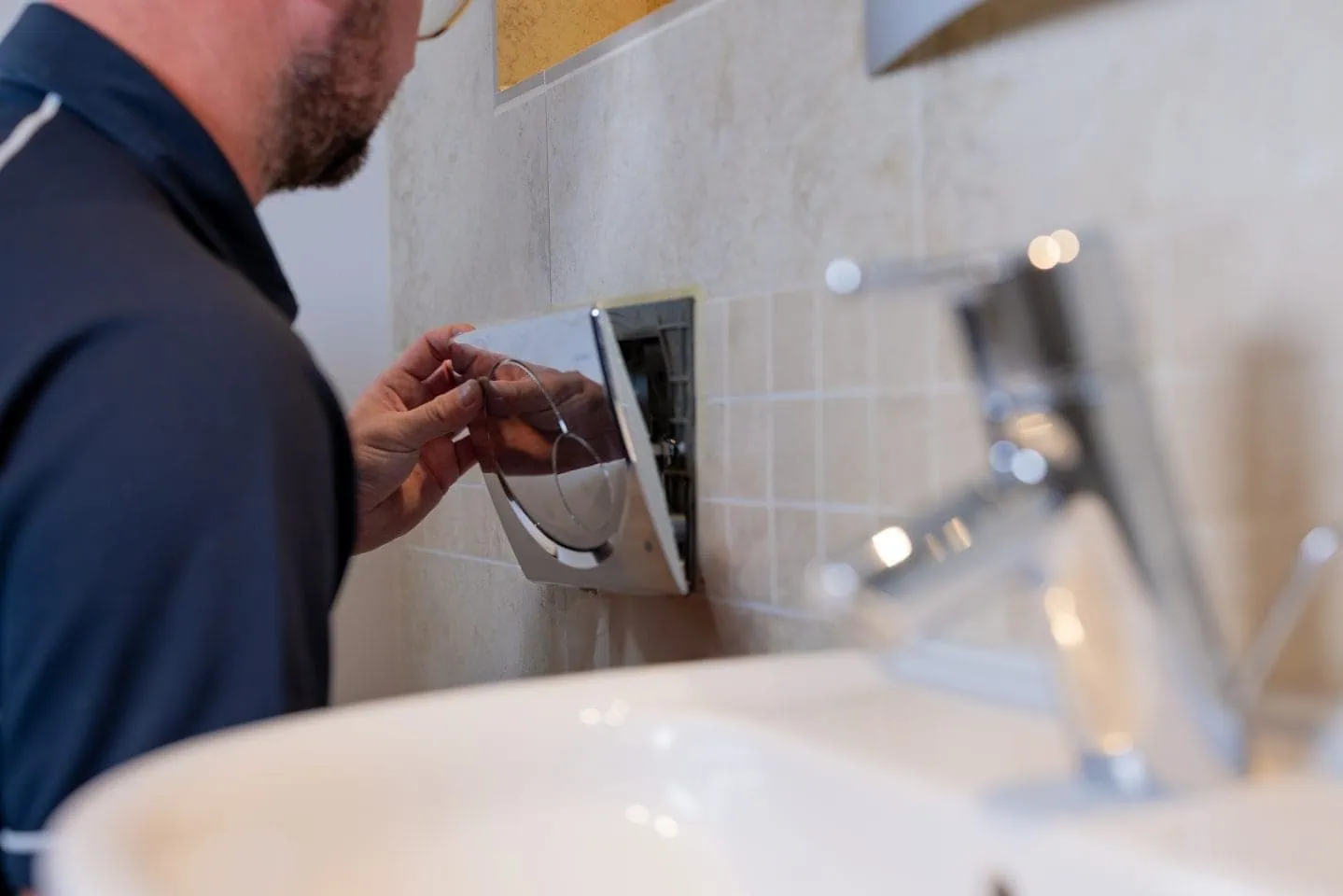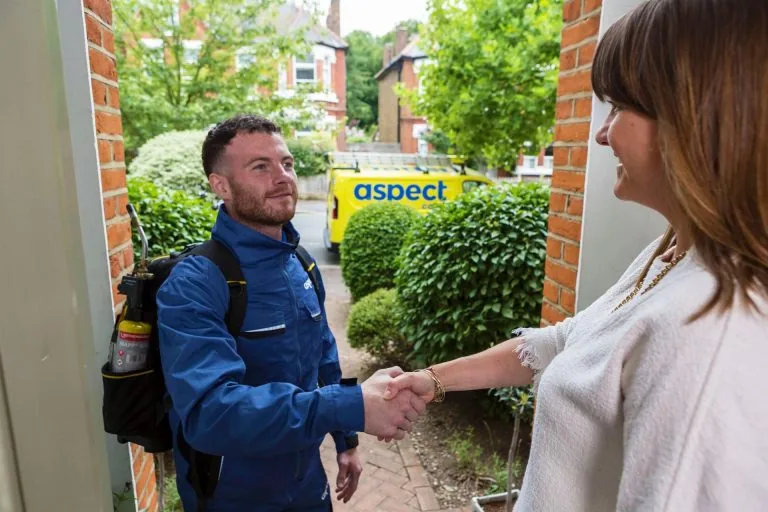“Help, my toilet is constantly running water” | Expert advice
Are you tired of listening to the incessant sound of your toilet constantly running water? Not only is it irritating, but it’s wasting precious water and increasing your water bill. In fact, the BBC reported that 400 million litres of water are estimated to leak from UK toilets every day.
In this article, our experts walk you through the common causes of a toilet constantly running and provide guidance to help you save money and also help the planet.

A waste of Britain’s water resource
How much water could be saved if everyone took the time to fix their constantly running toilet?
As many of us know from the hosepipe ban, the UK has already experienced water shortages. But, it is expected to face more frequent and severe water shortages in the future due to climate change and population growth. According to a report by the Environment Agency, England could “face significant water deficits by 2050” unless urgent action is taken to reduce water use. The report suggests that the UK needs to reduce per capita consumption of water from 140 litres per day to 100 litres per day by 2050. The report also recommends that, as well as reducing wastage, the UK should increase its use of recycled wastewater and rainwater harvesting systems to reduce demand on freshwater resources. You can learn all about rainwater harvesting in our blog, The homeowner’s guide to rainwater harvesting.
Conserving water as a precious resource is increasingly becoming a matter of duty, and a constantly running toilet should be a first priority, if you have one. Simply, it’s water and money down the drain. Thames Water commented that a constant leak of clean water from the cistern into the pan of your toilet can add £300 a year to your water bill if left unfixed.
In addition, a toilet constantly running can cause long-term damage to your toilet components. Failing parts can sometimes lead to bathroom flooding. Luckily, if caught early on, most problems can be resolved with a few adjustments or a plumber replacing faulty toilet parts in a quick visit – saving Britain’s water resource and your wallet.
Book a professional plumber

We have experts for all types of water-related issues, including constantly running toilets.
- From £42.75 + VAT per half-hour
- One hour minimum
- £10 off when you book online
- Fixed pricing for planned work
What to do when my toilet keeps running
The first step to fixing a toilet constantly running water is, of course, determining the root cause of the problem. The three main causes of a running toilet are flush valve issues, overflow tube problems, and fill valve malfunctions.
Regardless of whether you have a visible, wall-mounted cistern or a concealed cistern that’s hidden behind a wall or within a furniture unit, the cause of the constantly running toilet will be no different. If your cistern is concealed, you will need to remove the cover plate, before carefully removing the flushing rods located at the centre of the frame, unfastening any plastic bolts to release the frame and removing the debris plate. Remember, if you don’t feel confident looking inside the cistern, it’s always best to consult a professional plumber.
Start by flushing the toilet and observing the behaviour of each of the following components.
Flush valve
Flush valve issues can cause water to leak through the flapper, leading to a running toilet. The flapper, also known as the flapper valve, is a rubber component that seals the flush valve opening, retaining water in the tank. If the rubber flapper is worn, dirty, or warped, it may not close properly, allowing water to leak into the toilet bowl.
Overflow tube
Overflow tube issues can result in water constantly flowing into the toilet bowl, leading to a constantly filling toilet. The overflow tube is a component of the flush valve assembly, and if it is too short in length, it can cause water to run continuously. Paying attention to the overflow tube height, which should be between 8 and 12 inches above the bottom of the tank, will help you to understand if a repair is required on it.
Fill valve
Fill valve malfunctions can cause inconsistent filling and non-stop running of your toilet. The fill valve plays a major role in controlling the movement of water from the main water supply to the tank, as it ensures that an optimal amount of water enters the cistern. If the fill valve is faulty or broken, it may not shut off the water supply correctly, leading to a constantly running toilet. In such cases, the fill valve and fill valve tube might need replacing.
Inspecting your toilet tank components
Fixing a running toilet can be a feasible DIY project, but in most instances, it’s wiser to enlist the help of a professional plumber. Firstly, because making a mistake can be expensive to rectify and still require a plumber, regardless. Secondly, because it’s important to select the correct parts that are compatible with your toilet model. Some parts are universal, but many are specific to certain brands or models. Information on specific parts can be found in the user manual of the toilet in question, but this isn’t often readily available if it’s an older system.
Our plumbers have the tools, accreditations and expertise to stop your toilet constantly running. As a snapshot, a plumber can:
- Replace a worn or warped flapper with a compatible flapper for your toilet model and brand to ensure a proper seal
- Adjust the length of the chain that connects the flush lever to the flapper, if the chain is too long or short
- Adjust the float height to achieve a sufficient water level of one to two inches below the overflow tube in the tank
- Replace a worn fill valve or make adjustments to the fill valve to again, achieve a sufficient water level in the tank
- Replace the flush valve assembly by removing water from the system and lifting the tank off the toilet
Plus, a plumber can identify any other issues that require a professional opinion and suggest the best solution.
Other common water issues for toilets
Of course, not all toilet fill issues will result in water constantly flowing into the toilet bowl. If your toilet bowl is not filling with water after flushing, there could be issues with the float valve being too low, the overflow tube or flapper being faulty, or the toilet bowl jets being clogged. In addition, cistern overflow pipes that drain externally to prevent water from overflowing from the cistern can leak, often caused by a faulty float valve or a problem with the flush valve. Again, a plumber will be best suited to consult on fill issues and cistern leaks.
If your toilet bowl is leaking, the toilet could have a damaged wax ring at the base, a corroded flange or a crack in the toilet bowl itself. This is a job for a drainage engineer.
Call a professional plumber
By knowing when to call a professional plumber, you can save yourself time, frustration and potential further damage to your toilet system. Contact us today and plug your water wastage problem for good.

Our plumbers are available throughout Greater London and the Home Counties. Our service area includes Berkshire, Buckinghamshire, Essex, Hertfordshire, Kent, and Surrey. Use our postcode checker to see instantly if we cover your area.
If you need a plumber outside of this coverage area, we may still be able to help. Our team will check availability and see if one can be scheduled for your location.
Call or submit a callback request, and a member of our team will be in touch with you.
Was this article helpful?
Think we could improve this article? Please let us know